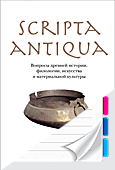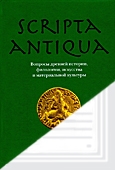Старший научный сотрудник Института искусствознания Академии наук Республики Узбекистан.
Ист.: Scripta antique. Вопросы древней истории, филологии, искусства и материальной культуры. Том VIII. 2020. Москва: Собрание, 2020.

Scripta antiqua. Вопросы древней истории, филологии, искусства и материальной культуры. Том VIII. 2020. Москва: Собрание, 2020. С. 96-128.
До недавнего времени многие исследователи зороастризма не находили убедительного объяснению отсутствия храмов данной религии на территории бывшей Ахеменидской империи (VI-IV вв. до н.э.). За последние десять лет в Сурхандарьинской области Узбекистана обнаружены и полностью раскопаны два храмовых комплекса середины I тыс. до н.э. Одним из них является храм Кизылтепа - ядро одного из крупнейших в Северной Бактрии городищ ахеменидского времени, результаты раскопок которого представлены в настоящей статье. В первую очередь приводятся данные по архитектурно-планировочной структуре, а также стратиграфия, периодизация и хронология памятника, во вторую - некоторые выводы общеисторического характера, основанные, на конкретных материальных свидетельствах. Прежде всего, это касается греко-македонского завоевания Северной Бактрии в 329-328 гг. до н.э. и его последствий.
L.M.Sverchkov (Tashkent, Uzbekistan), Wu Xin (Shanhai, China). THE TEMPLE OF FIRE V–IV BC KYZYLTEPA
A part of the article presents is the result of archeological investigations of the ancient Bactrian town of Kizyltepa in the Southern Uzbekistan. Its area is about 13–14 hectares, the core of the monument is the “citadel” located between the river channels, along the banks of which once rose the estates of the local nobility. “Citadel” is a large monumental structure in the form of a non-regular pentagon of 100 × 75 m, directed in the north by one of its angles. Interior on both sides was equipped with three-stage platforms similar to a Classical amphitheater, but in the traditional oriental style - with ivans. In the south-west comer of the amphitheater on a high hill stood a building, the excavations of which unearthed the ruins of the temple of fire that existed in three stages somewhere from mid-V to the end of the IV century BC. Its size is 22.5 x 18 m, inside there was a square sanctuary with an altar of fire surrounded by a bypass corridor with three pits for ritual cleansing. In the corner of the central room there was located a specially designed exit to the second floor, which, taking into account design values, allows reconstructing the appearance of a temple in the form of a three- stage zikkurat. Due to the Greco-Macedonian invasion 329-328 BC the temple was desecrated and destroyed. After that the survived population sealed the ruins with powerful and extremely labour-intensive brick masonry - a kind of burial sarcophagus, in which the altar of the sacred fire rested forever.

Scripta antique. Вопросы древней истории, филологии, искусства и материальной культуры. Том III. 2013. Москва: Собрание, 2013. С. 31–74.